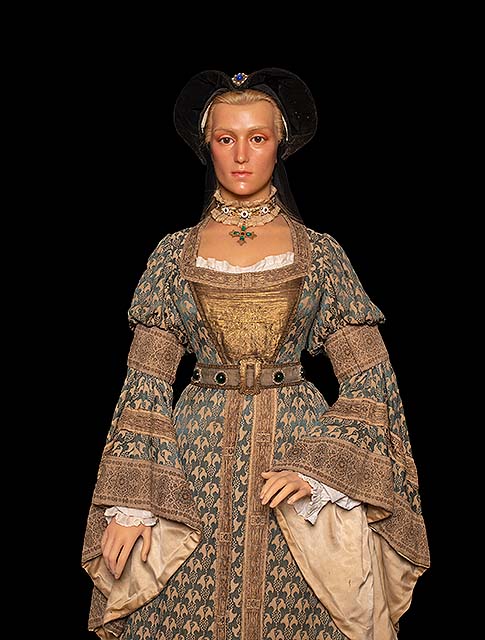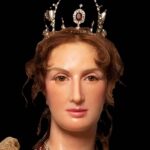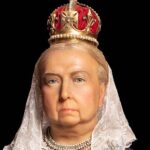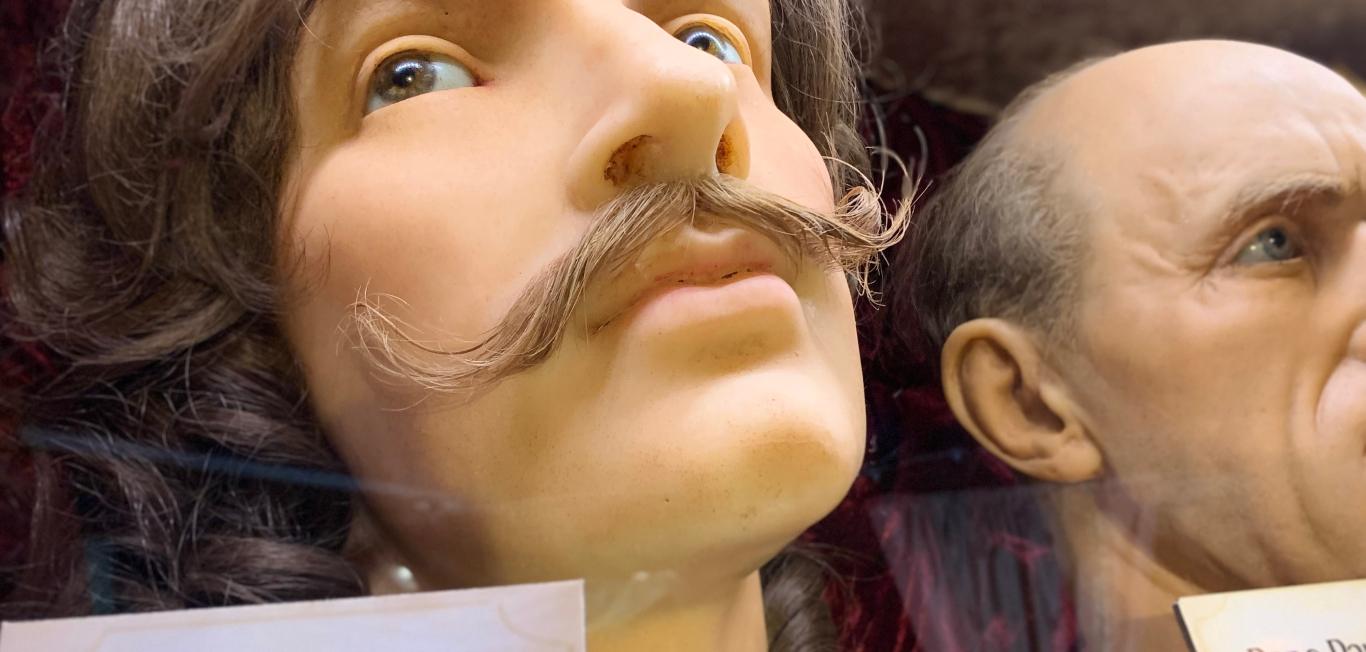About Anne of Cleves
Anne of Cleves is historically known as a queen of England and as the fourth wife of King Henry VIII during the 16th century. According to Anne of Cleves’ biography, she was born on September 22, 1515. Anne emerged from the Duchy of Cleves, a section of the Holy Roman Empire. Referred to in history as “Anne of Cleves,” she was a German noblewoman thrust into the heart of the English Reformation. Her encounter with Henry VIII in 1540 fostered a transitional political alliance strengthening the relationship between Cleves and England. However, Anne’s marriage to the king lasted only six months, and they separated, whereby she received a generous settlement. The separation was a fundamental landmark in English history and exemplified the dynamics of royal marriages during the Tudor era. Anne of Cleves’ biography explores Anne’s enduring legacy as a symbol of diplomacy and pragmatism amid the English Reformation.
Early Years
Anne of Cleves was born into a highly influential and politically active family in Soligen, which today is a part of Germany. She was the daughter of John III, Duke of Cleves, and Maria, heiress to the Duchies of Jülich-Berg. Her mother has been described as a conservative Catholic. Anne of Cleves’ birth date is not precisely known, but it is usually reported as September 22nd, 1515.
Young Anne was born during the volatile Reformation. During Anne’s early childhood, a large part of the empire roughly corresponding to Germany was disturbed by the religious upheaval instigated by the Augustinian monk Martin Luther, which was followed by the hugely destructive Peasants’ War. She was primarily taught how to conduct herself in the context of the court and how to perform domestic duties. A lot of Anne’s early years were mainly focused on preparing for marriage.
DID YOU KNOW?
A lot of Anne’s early years were mainly focused on preparing for marriage.
Her older sister Sibylle wed John Frederick, the Elector of Saxony, in 1526. This established a political connection with the German Protestant Confederation, as John Fredrick was known as the “Champion of the Reformation.” In 1527, at the age of 11, Anne was engaged to Francis Antoine, the Duke of Lorraine’s 9-year-old son and heir. Francis was 10 years old when the arrangement was made. Therefore, it was seen as an unofficial betrothal and was called off in 1535.
Henry VIII of England was able to rely on Anne of Cleves’ family as allies due to her father’s protracted battle with Charles V over Gelderland. Thomas Cromwell, the king’s top minister, pushed for the king to wed Anne. By March 1539, negotiations to organize the marriage were well underway. A marriage agreement was made under the supervision of Thomas Cromwell. The dowry, exchanged between Anne of Cleves’ brother and King Henry VIII, was 100,000 florins.
Marriage to King Henry VIII
The couple was wed on January 6, 1540, in the Royal Palace of Placentia in Greenwich, England despite Henry’s extremely outspoken objections. Their union was plagued by issues right from the start. It’s alleged that, on the night of their wedding, the king and his newlywed bride were unable to consummate their marriage. There was just a brief six-month marriage between the two. On June 24, Anne received an order to leave the court, and on July 6, she learned that her husband had decided to end the marriage. Witness testimonies from a number of courtiers and two doctors were obtained, and they expressed the king’s dissatisfaction with Anne of Cleves’ looks. An annulment request was promptly sent to Anne, and she approved. The driving force behind the union, Cromwell, was executed for treason.
Interesting Facts About Anne of Cleves
Facts about Anne of Cleves include her becoming a political pawn caught in diplomatic alliances during the 16th century. The Cleves-England tie was mainly political and attributed to Anne’s marriage to King Henry VIII. The union between Anne of Cleves and the king was a political alliance crafted to serve the interests of Cleves and England within the complex landscape of European politics. Anne of Cleves is remembered for her physical appearance, as King Henry VIII’s comments drew considerable attention to her looks. The focus on Anne’s looks overshadowed her diplomatic achievements and role in the Tudor courts. Anne had a short-lived marriage with the king, which lasted six months and overshadowed her ability to adapt and thrive after their separation.
In June 1540, Anne of Cleves departed from the English court, which marked the end of her short-lived queenship. This departure followed the annulment of her marriage to King Henry VIII. Anne of Cleves did not oppose the invalidation of her marriage to the king, as she understood her position. Anne received properties and a palace as part of the annulment settlement and was granted the title of “The King’s Beloved Sister” by Henry. Anne’s father tried to facilitate remarriage to King Henry VIII after their separation. Later on, in the 17th century, Anne of Cleves was known as the “Flanders Mare.” Anne reigned briefly as Queen of England from January 6 to July 12, 1540. Anne of Cleves lived long enough to see Queen Mary I ascend to the English throne and reverse Henry VIII’s Protestant reforms. Anne of Cleves died peacefully in 1557.
DID YOU KNOW?
Anne reigned briefly as Queen of England from January 6 to July 12, 1540.
Portrait of Anne of Cleves
Anne of Cleves’ portrait was finalized in 1539, portraying Hans Holbein’s strong relationship with King Henry VIII of England. The image depicts Anne attractively, adorned in exquisite attire and embellished with a sizable cross above her chest. Anne of Cleves’ portrait showcases Holbein’s artistic prowess and reflects 16th-century Tudor fashion and the significance of Anne’s marriage to the king.
End of Life
Anne of Cleves’ death was attributed to her deteriorating health and Queen Mary I allowed her to reside at Chelsea Old Manor. In mid-July 1557, Anne stated her final will and left behind a testament to her thoughtful disposition. Anne of Cleves was remarkable to her servants throughout her final years as an easygoing and generous mistress. Anne’s generosity was far-reaching, and she left a significant legacy for her servants. Unfortunately, Anne of Cleves succumbed to cancer on July 16, 1557. Anne of Cleves’ death was at Chelsea Old Manor, and she was buried in Westminster Abbey. The lasting memory of Anne of Cleves has been enshrined forever in the annals of English history. Anne of Cleves marked history as being the last of King Henry VIII’s wives to pass away.
FAQs
What was the cause of the controversy surrounding Anne of Cleves?
The controversy around Anne of Cleves emerged from her marriage to King Henry VIII, which ended in a brief and unsatisfactory union due to her unappealing look.
Why did Anne of Cleves never remarry?
Anne of Cleves never remarried after her marriage to King Henry VIII was annulled, as she was granted a generous settlement and maintained a comfortable life in England.
Who did Anne of Cleves love?
History does not provide meaningful evidence on whether Anne of Cleves had a notable romance or love interest after the end of her marriage to King Henry VIII.
At what age did Anne of Cleves pass away?
Anne of Cleves died at the age of 41 years old.










